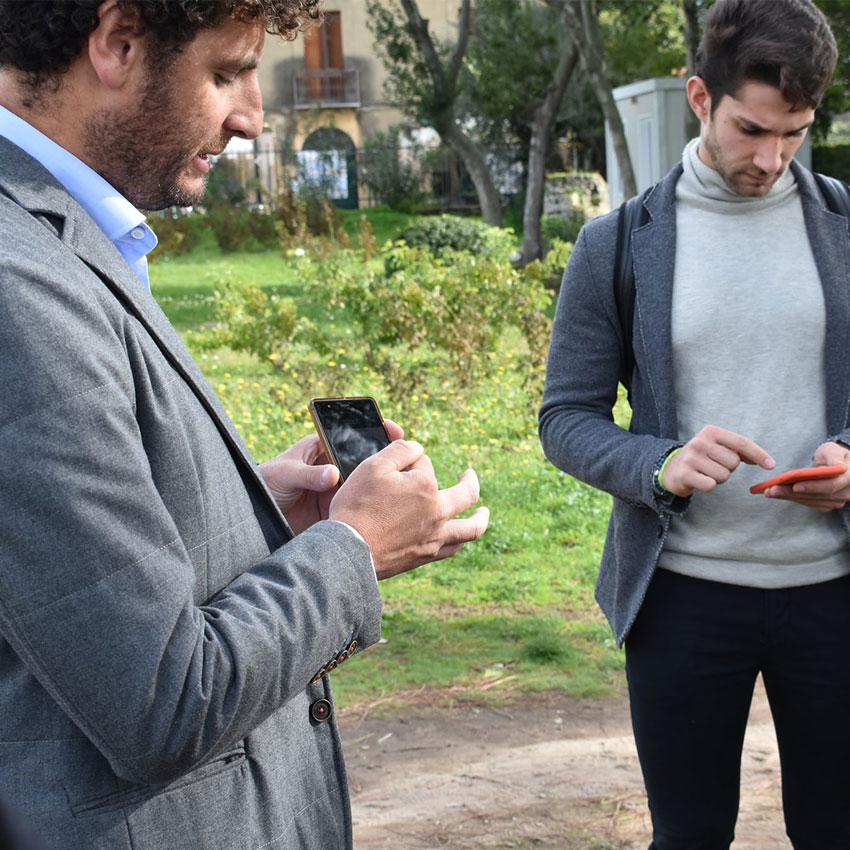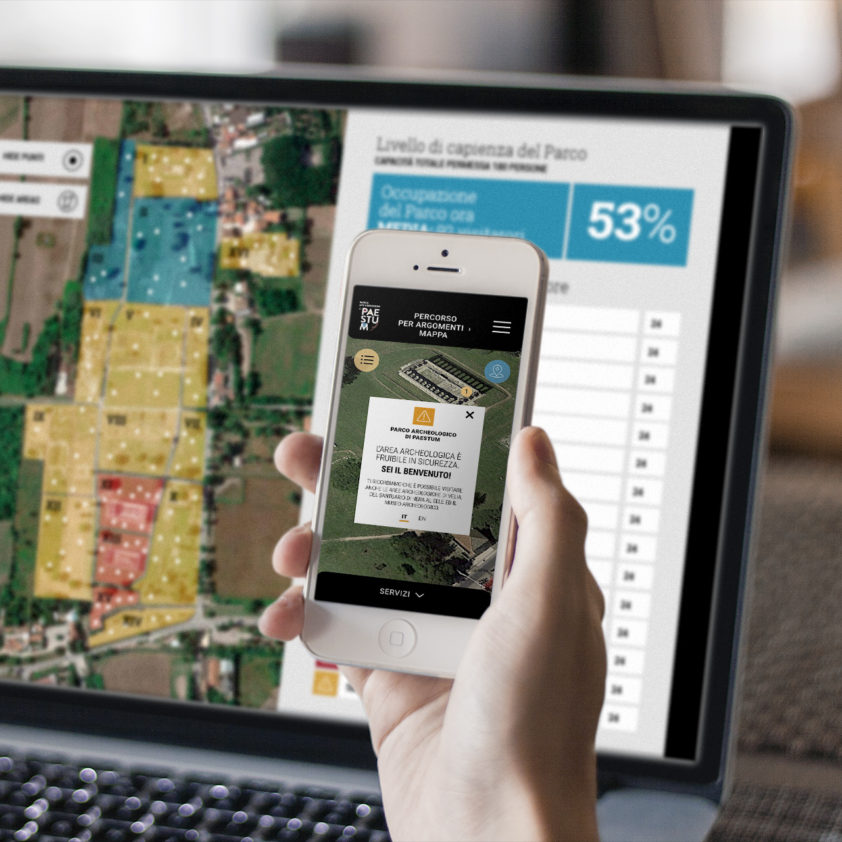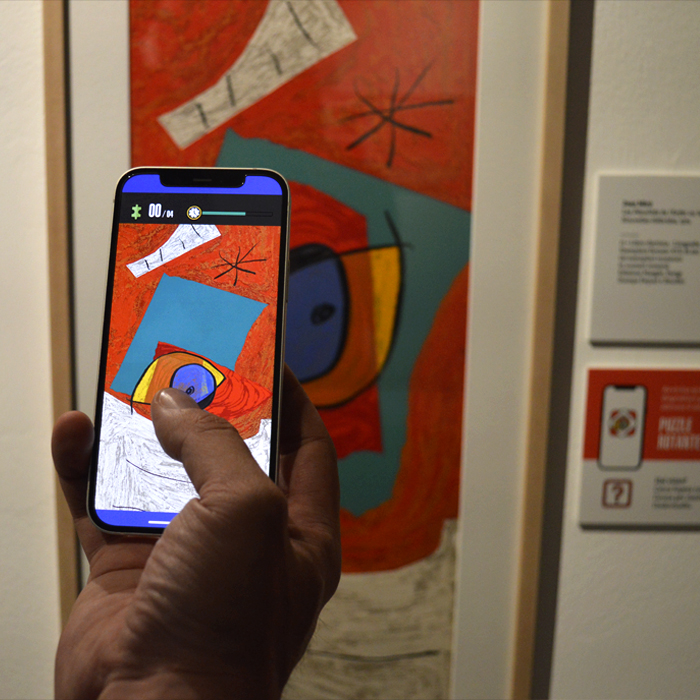MRT PLAY, Gamification app for the Galleria Sabauda
The complex of the Musei Reali di Torino (Royal Museums of Turin), established in 2016 bringing together the five most important Museums of Turin, is now one of Italy’s most visited Museums. The popularity it enjoys allows it to ride the wave of change and exploit it to engage all types of audiences. Keeping updated with change and new generations also means digitalisation, that’s why we have designed and produced the new gamification App, called MRT Play.
Designed by Visivalab in collaboration with the Musei Reali and with the fundamental support of the Fondazione Compagnia di San Paolo, the new MRT Play app involves the application of gaming mechanics and game-design elements in contexts that are not normally oriented towards recreational activities. Gamification is thus declined as a strategy at the service of the user experience. In this way, the museum experience goes beyond the contemplation of the artworks and stimulates learning through fun and interaction.
CLIENT Musei Reali di Torino
YEAR 2022
FEATURES
- Developed for learn and play visits
- Interaction with the artworks
- User geolocation
- Designed for multiple audiences
- Two levels of difficulty
- Design of 10 minigames
- Storytelling adapted to six different characters
- Illustration, iconography and graphic design
- UX/UI
- Available in iOS & Android
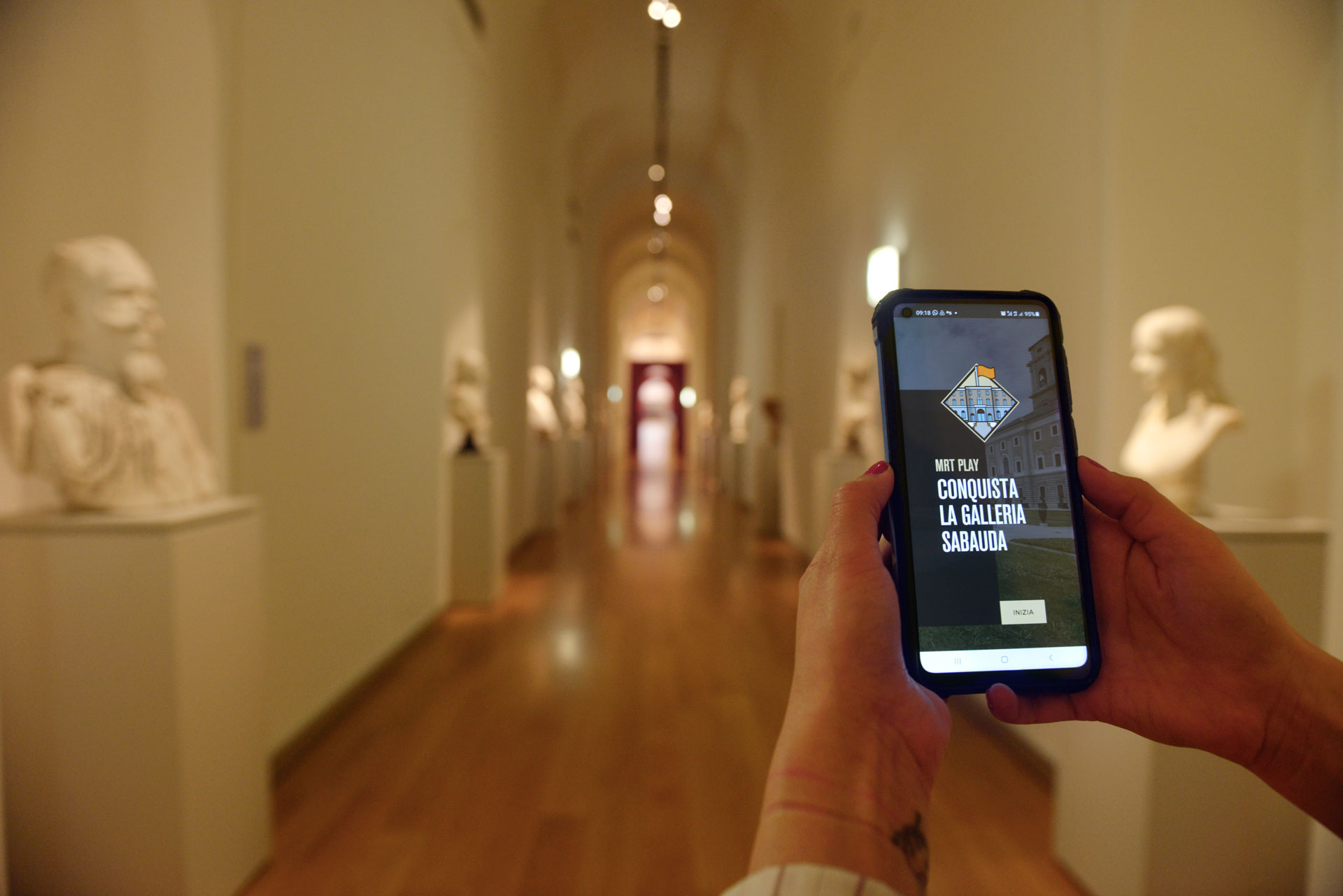
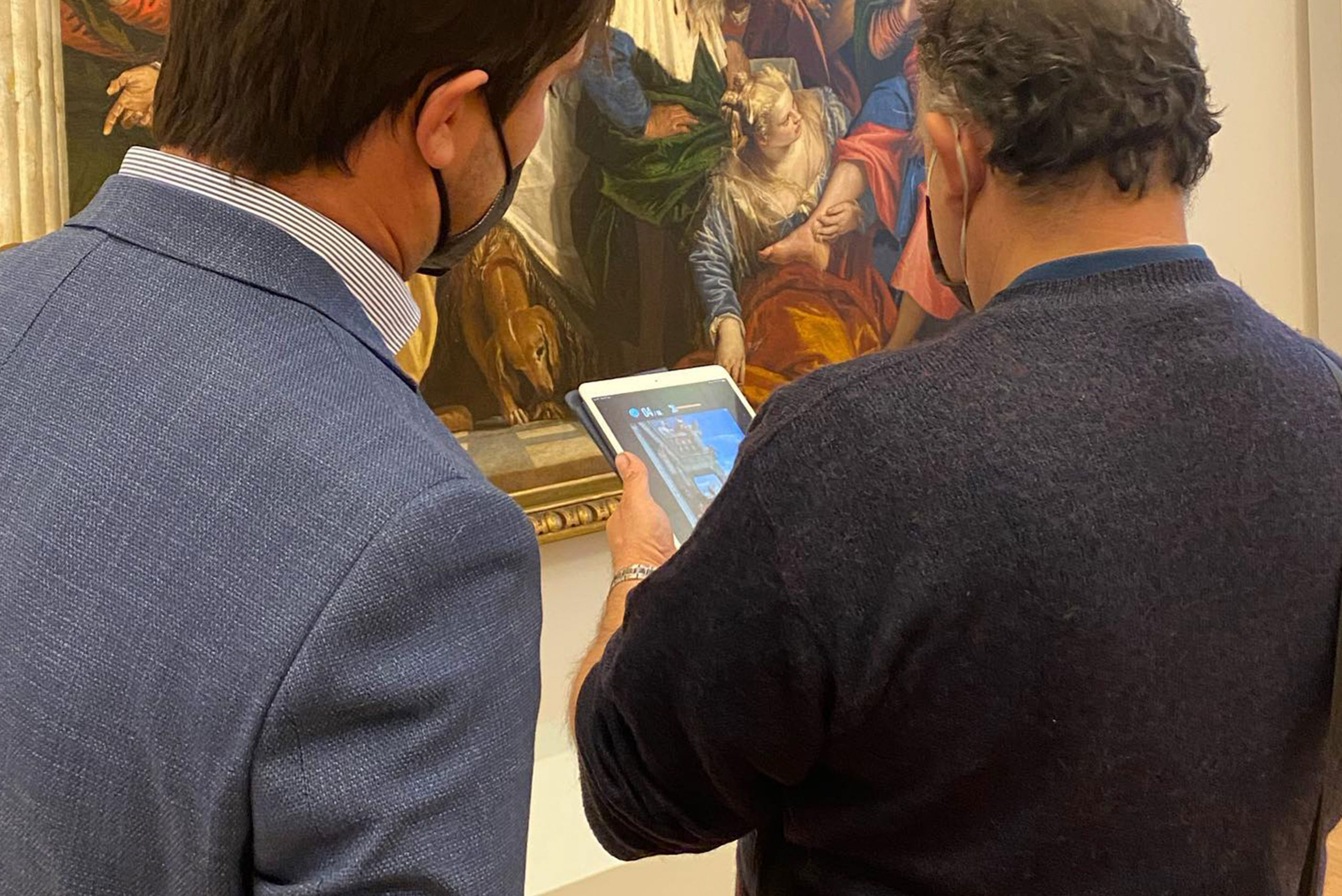
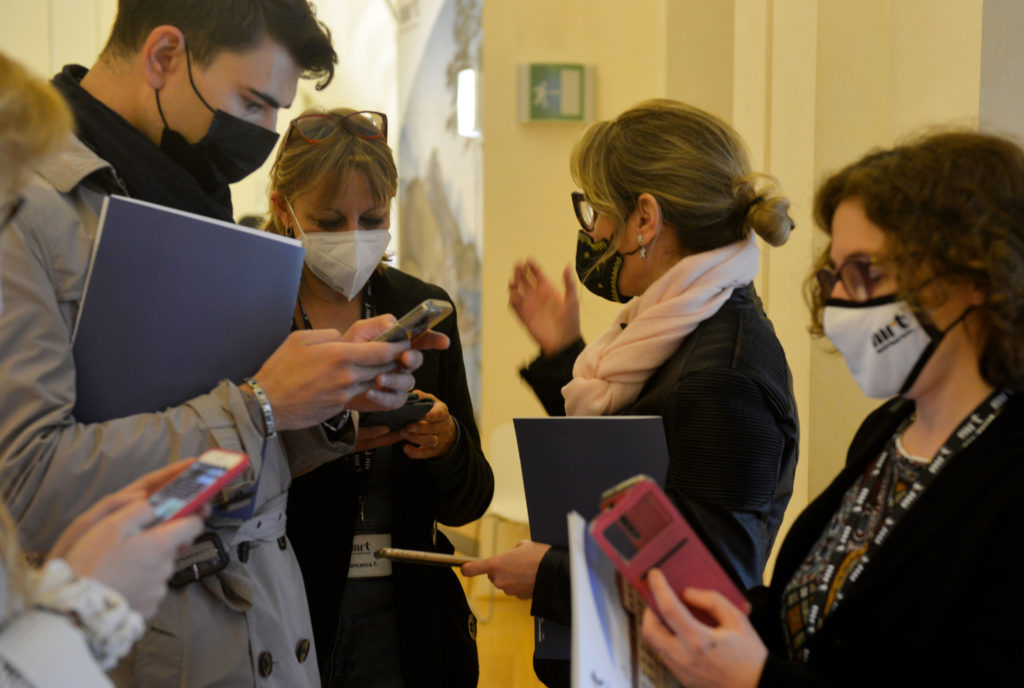
Project
The new application, MRT Play, conceived and developed thanks to the work of computer scientists and designers with the fundamental support of art scholars, takes users on a guided tour that actively involves the public through play. The visit to the museum is now animated with original content and cultural insights proposed to the public in a pleasant and engaging way.
It’s also important to consider that the game allows to increase the loyalty of the public and encourages new generations to visit museums.
The artworks in the Galleria Sabauda are presented to the public in an educational way, but in a fun and interactive way, thanks to mini-games, puzzles and interactive stimuli that involve the user.
The game is structured in a way the user can play individually or in teams, to include groups of visitors, but also individual users. In order to start the game, the user must register in the App, writing a name and setting the level of difficulty, thus creating a user profile to record the score during the challenges.
TECHNICAL INFORMATION:
PROGRAMMING
-
- React Native
- Babylon.js
- Strapi
- Data Base MySQL
HARDWARE
- Beacon Bluetooth
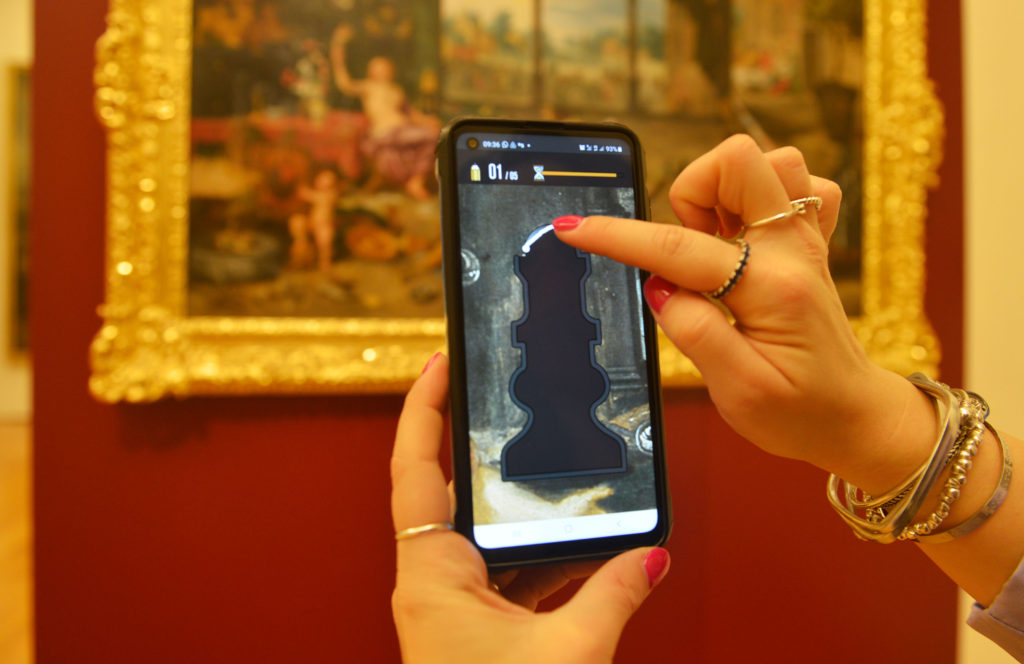
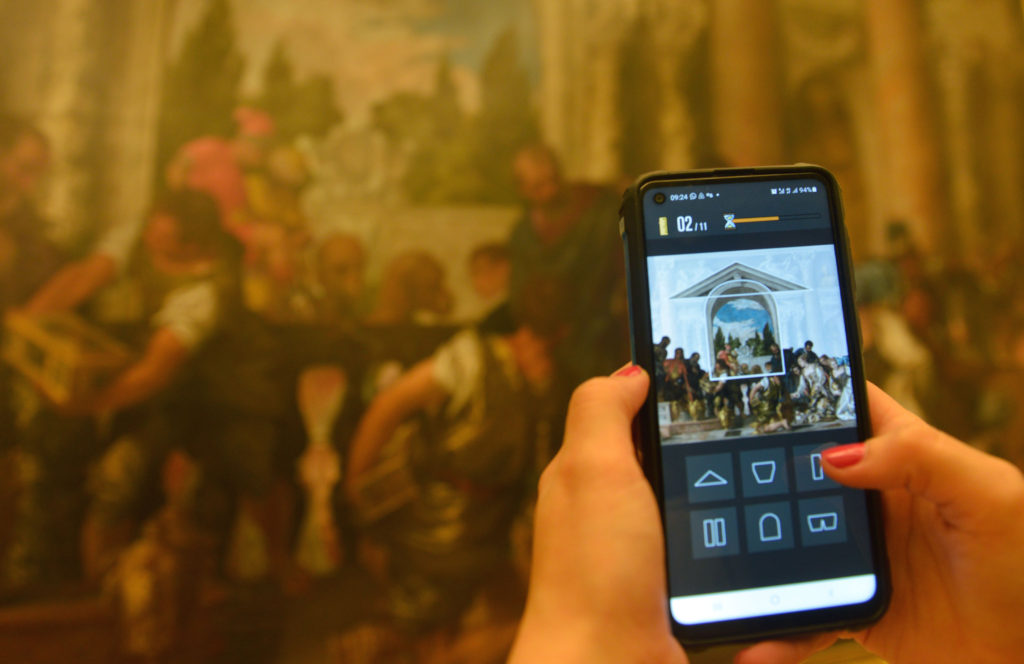
To make the game customisable, six characters have been created. Three of them belong to the history of Turin, and three reference the professionalism of the Cultural Heritage.
The choice of a character influences the course of the visit since each character corresponds to a different game and Museum perspective.
Clementina, a court painter, a young Cavour as a page, and Duke Carlo Emanuele I will follow the visitor, providing information and riddles that tell the story of the city, the Savoy court and the paintings on display in the Gallery. The curator, the restorer and the researcher, on the other hand, introduce restoration techniques, museum organisation, themes and iconography of the paintings.
After registering and choosing a character, the App guides the user through the visit by displaying an interactive map of the rooms of the Savoy Gallery. The game area is divided into 10 sectors to be “conquered”, each one characterised by a mini-game and a set of riddles.
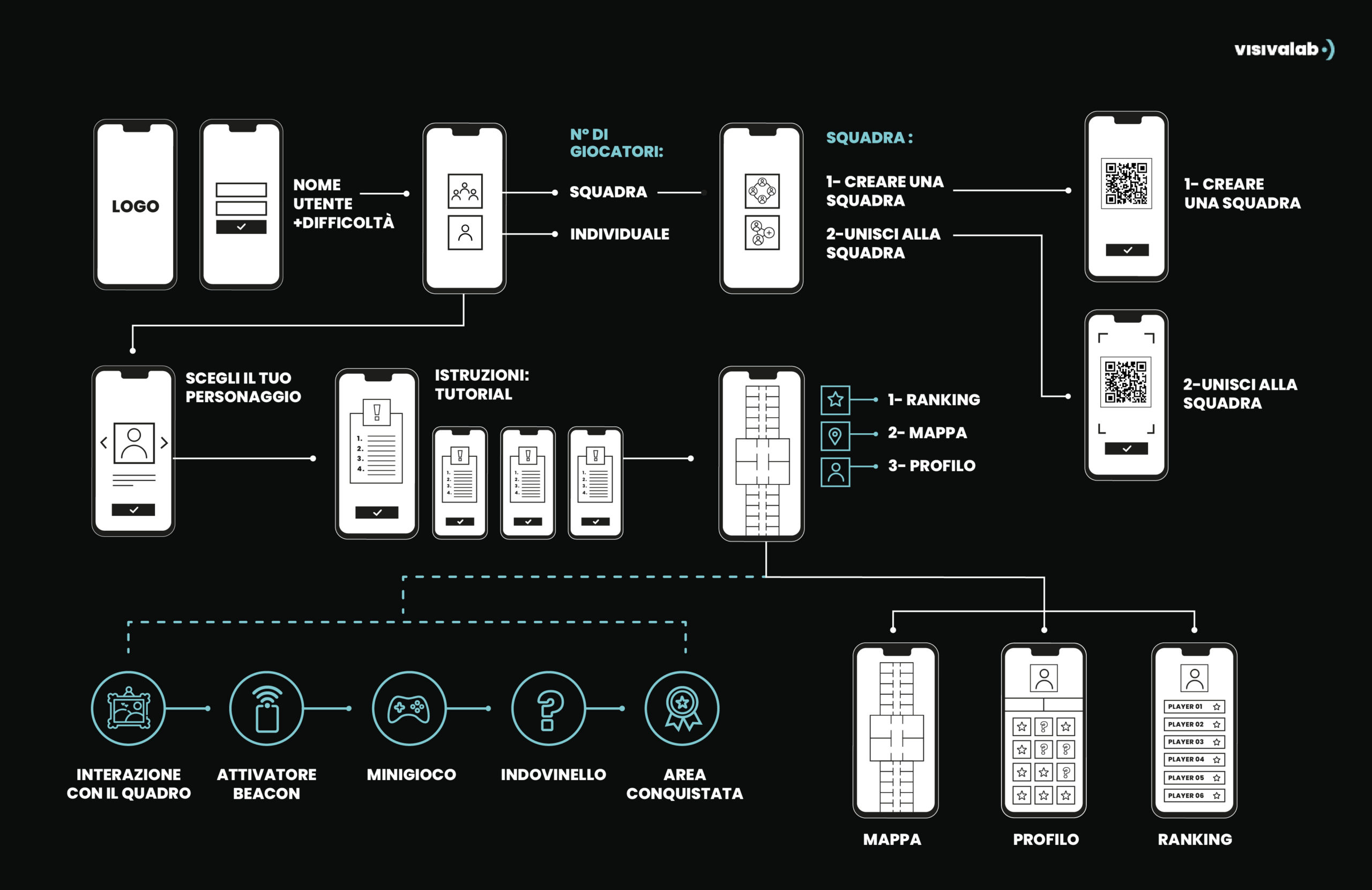
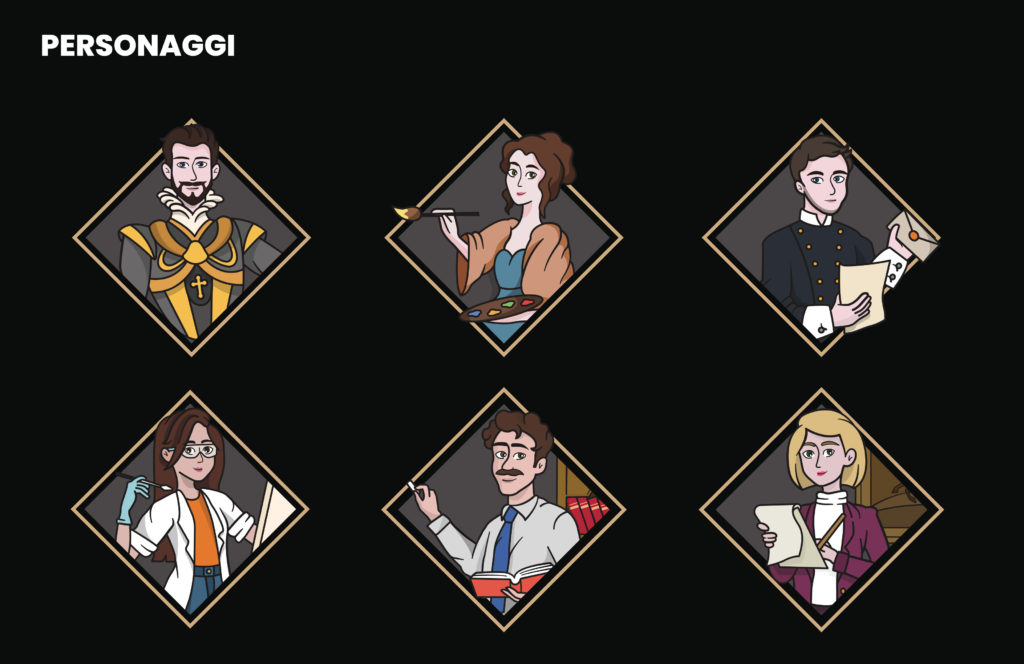
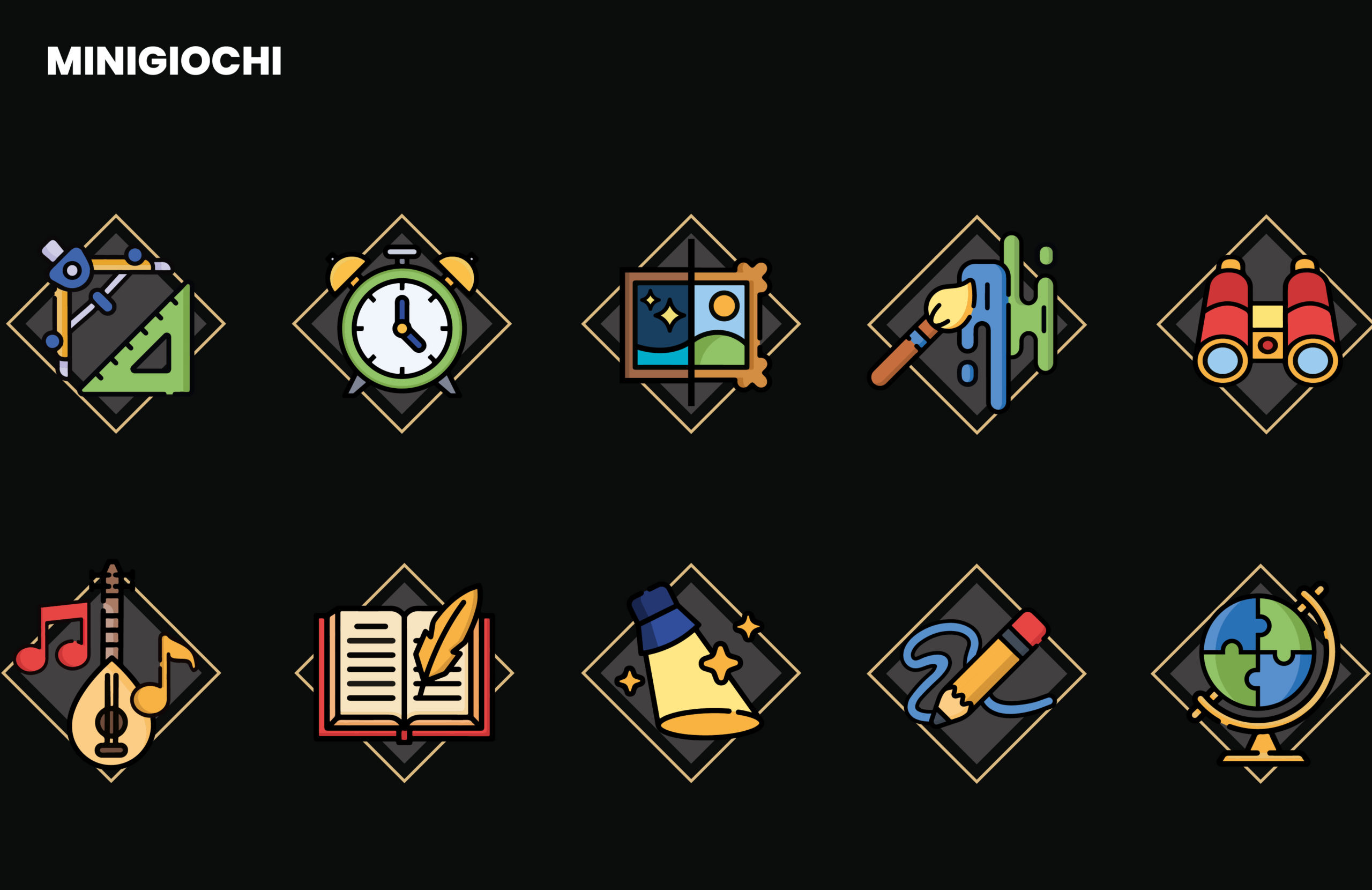
HOW DOES MRT-PLAY WORK?
Inside the rooms of the Galleria Sabauda, the visitor’s smartphone will receive a signal from one of the antennas installed near a work of art. This signal allows you to take part in the mini-game and thus interact with the painting in a fun way.
The mini-games vary from room to room and have been constructed in relation to the composition, themes and representational structure of the works concerned. There are both mini-games with classic mechanics (combination systems and puzzles, finding figures and identifying differences) and more complex forms of gaming, which require the operation of the sensors that characterize modern smartphones (drawing operations, scrolling and moving the phone, typing on the touch screen, etc.).
At each step in the completion of the mini-game, additional information on the work will be provided: the presentation of this information is related to the player’s action: if, for example, the user is asked to recognise the architecture of a backdrop, each correct operation will describe the architectural element that has been recognised. In this way, the information is linked to the action and makes its fruition direct.
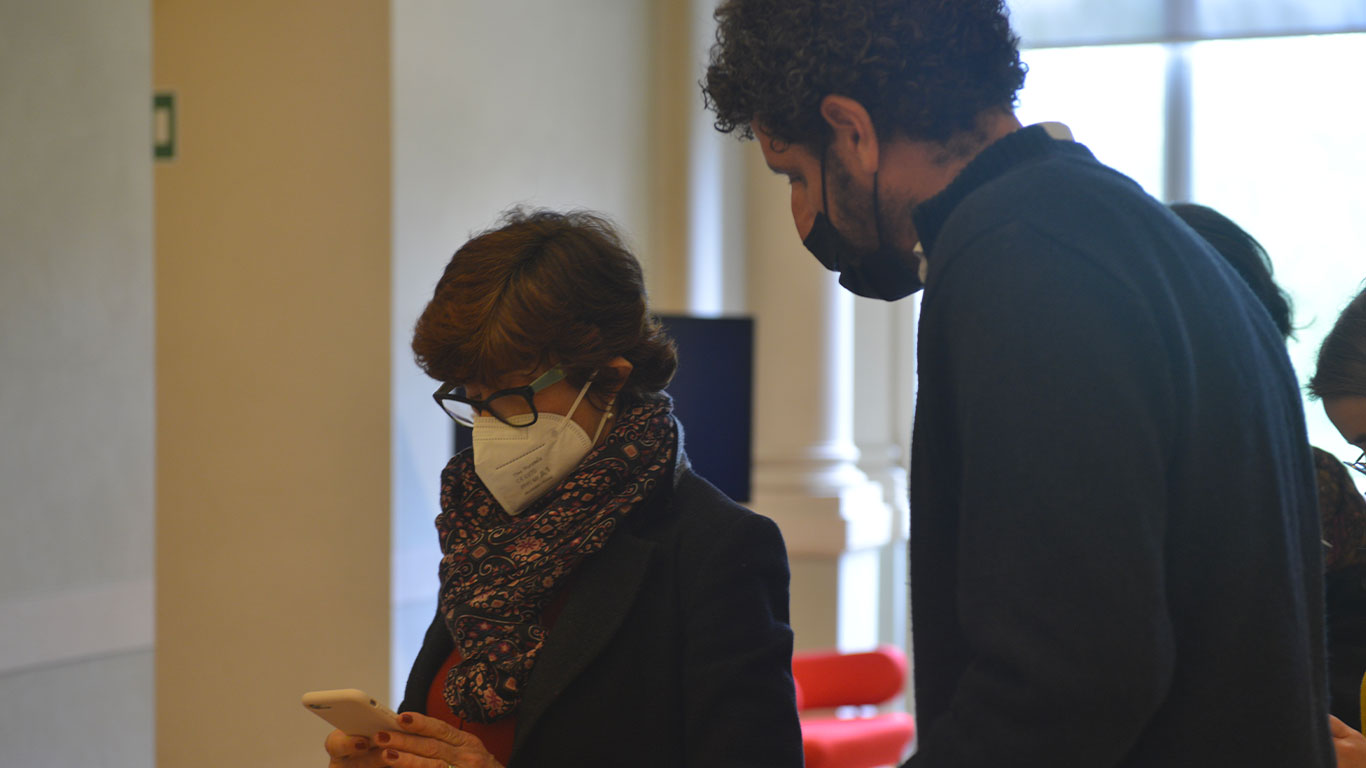
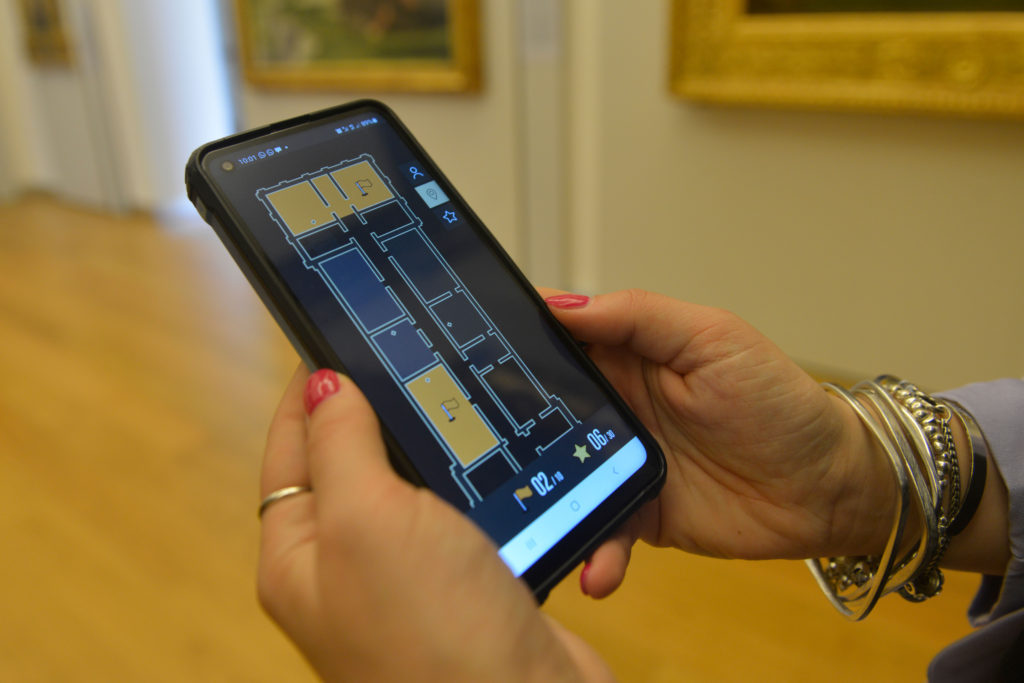
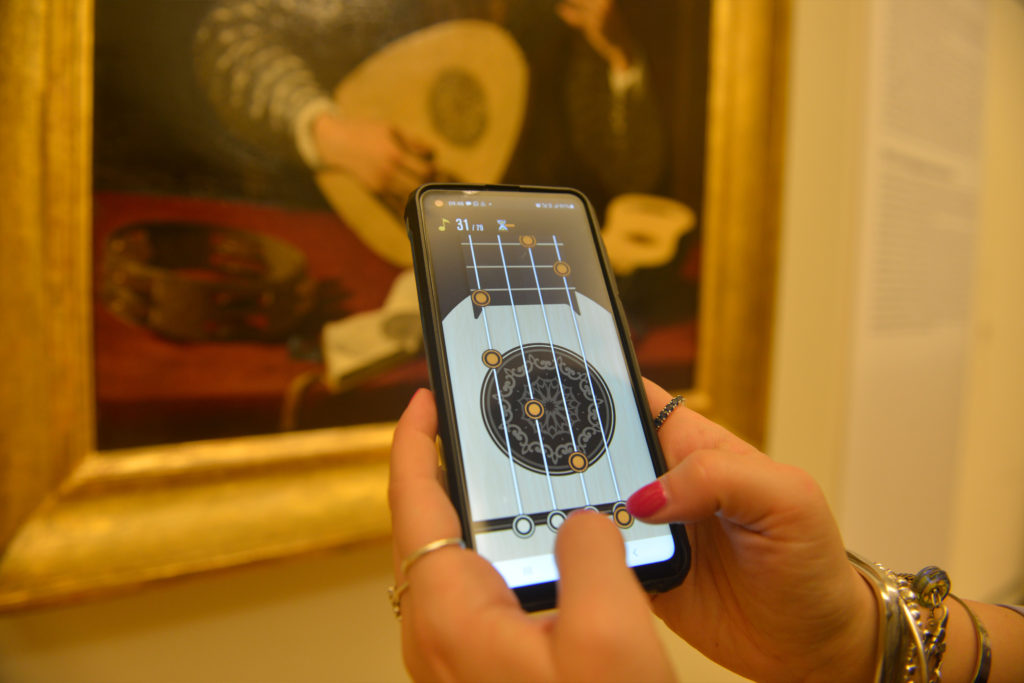
Depending on the level of difficulty selected and the percentage of completion of the mini-game, the player receives a basic score. At the end of this phase, riddles will be activated in the same room based on the knowledge gained from understanding the content presented in the room and the attention paid by the user during the visit. The riddles are different for each individual character: this means that players, by selecting a new one, will have access to other activities, and this makes the replayability of the app higher.
Once the riddle is completed, the area will be “conquered”. The fruit of these victories will be marked on the interactive map, so as to show the user the progress of the game.
Once all the rooms have been conquered and the visit to the Gallery has ended, the player will be able to see his own final score and know the best scores of the other players ranked. However, it is not compulsory to finish all the games: the app will save the user’s results and they can come back later to finish all the available activities.
TECHNICAL INFORMATION
PROGRAMMING
-
- React Native
- Babylon.js
- Strapi
- Data Base MySQL
HARDWARE
- Beacon Bluetooth

